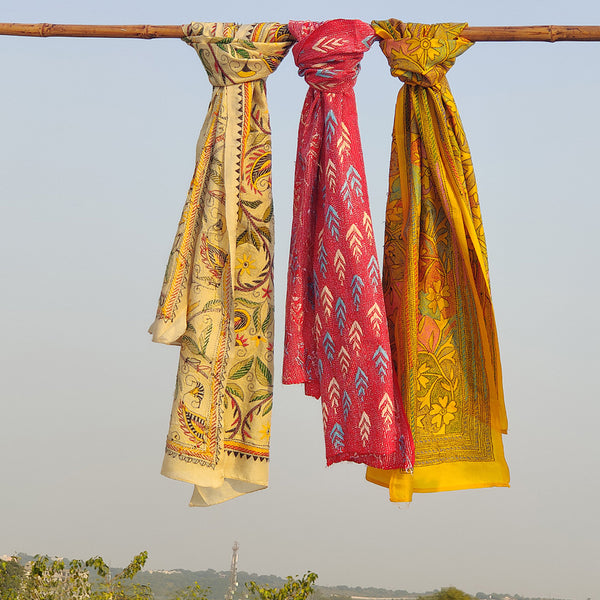Sandalwood or Chandana is known to be a fragrant heartwood for us Indians as we have been using it for centuries for its fragrance, medicinal qualities, woodworking, perfumes as well as fairness remedies. It holds a religious importance for Hindus and is considered sacred when it comes to Ayurveda. Also, this material can be seen for carving artifacts which enhances the richness of this material to the zenith.
Our Indian state, Karnataka is known to have a huge forest belt of Sandalwood, having a widespread business of Sandalwood carvings, transforming wood into a beautiful art. It has its best Sandalwood carvers, who are elite workers, in a few of its cities, viz., Bengaluru, Shimoga, Mysore, Honavar, and Sorab, whereas Mysore is aldo known as the Sandalwood city of India. The major works of these workers or artists are sandalwood carvings, wooden toys, Mysore traditional paintings, stone carvings, sandalwood idols of gods and goddesses, candle stands, and many more. In this blog, we will be discussing about history of sandalwood carving, process of sandalwood carving, future of sandalwood carving and products that can be made using sandalwood. Come read along with us.

History of Sandalwood Carving
Sandalwood is considered one of the most holy plants in Ayurveda, particularly sandalwood powder and essential oil. However, its wood is a natural miracle in its own right. This tree is endemic to Karnataka and has been used for a variety of purposes and products from ancient times.
Sandalwood carving is one of India's most traditional professions, with a strong connection to Indian culture and the Ramayana. Gudigars are a society of craftsmen who perform sandalwood carving, ivory carving, and stone carving. They came from Goa to Uttara Kannada or Mysore after the Portuguese conquest. Sandalwood carving has been practiced in Karnataka for over a thousand years.

Process of Sandalwood Carving
The process of sandalwood carving requires detailed attention to minute things too. The miniature art is engraved on the smooth and whitewashed surface of sandalwood with the interspaces between the lines being removed. This requires too much detailing and the final structure is cut out in the minutest details keeping intact all the complexities, ideal bend, as well as shade impacts.

Picture Credit:- Pinterest/youtube.com
Which type of Handicraft products are made with Sandalwood?
With sandalwood carving, one can go for a variety of handicraft products. Its hard yellow wood is used to make combs, religious artifacts as well as beads. However, its wood in particular is used to prepare the idols of gods and goddesses, boxes, and much more.

Future of Sandalwood carving in the Indian market
Sandalwood is a highly valuable tree that continues to be in high demand in India. However, throughout time, it has maintained its speed in both the worldwide market sector and regions. What has kept the market alive is the essential oil, which is a constituent in most good fragrances with a woody aroma. It is also found in body-care products, medications, furniture, idols, and traditional remedies, all of which are highly sought after. Looking at the existing demand, sandalwood is predicted to remain a solid foundation in Asia, Europe, and Australia until 2040, which is a long period. Due to long-term demand, its price is unlikely to rise much as long as its supply and good plantation practices are maintained. However, as of now, the price of sandalwood remains sufficiently high as a result of improved cultivation techniques, innovations, and high yields, which are predicted to rise further, particularly in India.

Conclusion
Following the traditional benefits and its uses even now, sandalwood has played a significant role not only in figurines but also in other purposes. Even at our home, we can see sandalwood in the worship place or medicinal creams. Further, it has expanded itself from wooden toys or idols to women's accessories such as bracelets, beads, bands, or necklaces, making sandalwood (especially Karnataka sandalwood) one of the best Indian crafts of the time. Check out a range of things made of sandalwood at iTokri such as sandalwood room freshner, incense sticks, bathing soap etc.











Leave a comment (all fields required)